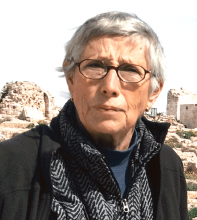You are here
Destruction goes on unabated
Mar 11,2015 - Last updated at Mar 11,2015
The destruction by Daesh of Iraq’s and Syria’s cultural heritage is impossible to comprehend.
The latest target was Nimrud, the remnants of the ancient Assyrian capital city near Mosul, which, according to reliable reports, has been bulldozed.
While ancient images of winged bulls may be construed as idols, forbidden in Islam, walls, arches and decorative stone-carved reliefs cannot.
Therefore, there is no religious pretext for destroying the palace walls and other constructions.
Destruction is Daesh’s shock and awe. Severe provocation is the only possible reason for this wanton destruction of Iraq’s cultural heritage and the cultural heritage of the civilised world.
Daesh has shocked the international community by chopping off the heads of Western journalists and aid workers and burning to death a Jordanian pilot.
Just because it can, for the moment, do whatever it wants, Daesh has distressed historians and archaeologists by bulldozing historical sites, looting archaeological treasures and destroying artefacts in the Mosul Museum, the second largest in Iraq after the Iraq Museum in Baghdad.
In its shock and awe campaign at the local level, Daesh also decapitated scores of Syrian and Iraqi soldiers, buried and burned alive others, cleansed and enslaved Christians and Yezidis, and has slain Sunnis who do not submit to its ideology or rule.
Senior Muslim clerics and archaeologists joined together in condemning Daesh’s destruction of Nimrud, as well as the 14th century mosques of the prophets Seth and Jonah in Mosul, and the 7th century Assyrian Christian Green Church and the Forty Shrine mosque, the oldest shrine in Iraq, housing the remains of companions of the Prophet Mohammad in Tikrit.
Iraqi archaeologist Lamia Al Gailani Werr, who visited Nimrud last year, told The Jordan Times that the 360-hectare site contained “much, much more than [the collection] in the British Museum” appropriated by 19th century archaeologist Austen Henry Layard.
“There was still a great deal to discover,” stated Gailani.
There were “at least five winged bulls” and beautifully carved stone reliefs in the remains of the palace of the 9th century BC ruler Ashurnasirpal.
“It was the royal palace of the king who ruled the known world.”
The wealth of the palace was revealed in the magnificent gold jewellery found in its ruins. The jewellery is fortunately in the Iraq Museum in Baghdad.
While it was pillaged in the days following the US military occupation of the capital, the gold was in the vaults of the Iraqi Central Bank.
Currently an associate fellow at the London-based Institute of Archaeology, Gailani was sent to Baghdad by the British Museum to assess the damage to the Museum’s collection.
The Iraq Museum’s reopening to the public early this month for the first time since the US occupation coincided with the circulation of Daesh video showing its militants armed with sledge hammers and drills destroying treasures in the Mosul museum, notably 9th century BC Assyrian winged bulls from Nimrud and statues from the northern 2nd or 3rd century BC Iraqi Hellenistic-Parthian city of Hatra.
“All we can do is what Shiites do [in mourning]: beat our chests,” asserted Gailani.
She dismissed the notion that Daesh would respond to world pressure. She did not accuse the people of Mosul for failing to protect the museum and Nimrud. She said, Daesh “practises real terror… not like Saddam Hussein who threw people in prison”.
She blamed former US president George W. Bush for the rise of Daesh in Mosul.
“This goes back to Bush… all the mistakes... the US did nothing to prevent the establishment of [ultraorthodox] Salafists in Mosul in neighbourhoods called ‘Kandahar’, for Afghanistan.
“Mosul has always been a conservative city, but it changed once the university opened [in 1967]; women took up studies and students came from all over Iraq.” The university, the second largest after the University of Baghdad, was closed by Daesh last year.
The next target were the splendid remains of Hatra, about 100 kilometres southwest of Mosul. Hatra is one of several UNESCO World Heritage Sites in the region.
Daesh began its depredations in Raqqa, the north-central Syrian provincial capital seized by it in October 2013, eight months before Mosul fell to the cult.
Daesh destroyed the city’s famous lions in Al Rashid Park, once a gathering place for residents. Since then, Raqqa has been bombed by the Syrian air force and US-led anti-Daesh coalition warplanes.
Damage has been inflicted on the old city and its Abbasid empire era walls.
It must not be forgotten that Raqqa was the imperial residence of the Caliph Harun Al Rashid in 796 AD. He built palaces, parks and residences, and made Raqqa a cultural centre for the Abbasid empire during its “Golden Age”.
Ironically, Raqqa has become the capital of cruel, backward-looking, destructive Daesh, which seeks to thrust the Muslim world into a dark age of violence, intolerance and ignorance.
Daesh is, however, not the only insurgent group to wreak destruction on the cultural heritage of Syria.
Al Qaeda affiliate Jabhat Al Nusra and the factions of the Western and Arab-backed “Free Syrian Army” (FSA) held the ancient Christian town of Maaloula for eight months, looting and burning ancient convents of St Sergius and Bacchus and St Thekla.
They shelled and pillaged the homes and shops of the residents of the town.
In Homs, Jabha and the FSA vandalised the Church of Umm Al Zenar (the Church of the Belt of the Virgin), where Christian services had been held as early as 59 AD, as well as mosques, including the Ottoman-restored Khaled Ibn Walid Mosque.
I mention these cultural sites in particular because I have visited both Maaloula and Homs, and can testify to the devastation and damage wrought on sites which belong to the cultural heritage not just of Syria and the Arabs, but the entire world.












